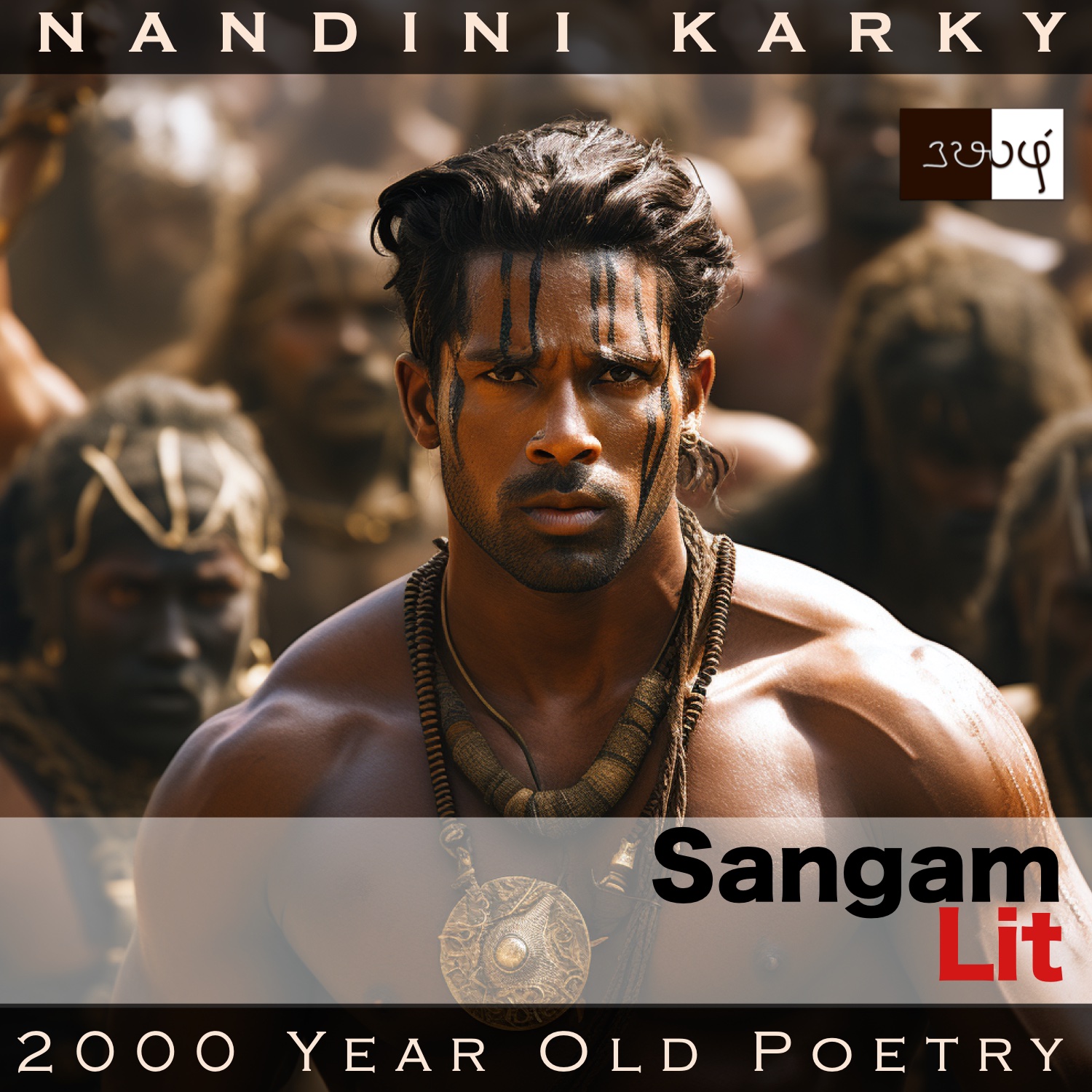Podcast: Play in new window | Download
Subscribe: Apple Podcasts | Spotify | Amazon Music | Android | iHeartRadio | TuneIn | RSS | More
In this episode, we observe a moving act of friendship, as depicted in Sangam Literary work, Puranaanooru 275, penned by the poet Oroouthanaar. Set in the category of ‘Thumbai Thinai’ or ‘Battle of two kings’, the verse sketches vividly the valour of a warrior in the battlefield.

கோட்டங் கண்ணியும், கொடுந்திரை ஆடையும்,
வேட்டது சொல்லி வேந்தனைத் தொடுத்தலும்,
ஒத்தன்று மாதோ, இவற்கே; செற்றிய
திணி நிலை அலறக் கூவை போழ்ந்து, தன்
வடி மாண் எஃகம் கடிமுகத்து ஏந்தி,
‘ஓம்புமின், ஓம்புமின், இவண்!’ என, ஓம்பாது,
தொடர் கொள் யானையின் குடர் கால் தட்ப,
கன்று அமர் கறவை மான,
முன் சமத்து எதிர்ந்த தன் தோழற்கு வருமே.
In this series on the battle between kings, we get to witness an evergreen emotion. The poet’s words can be translated as follows:
“A curving head garland, an attire akin to swirling waves, bending the king’s will by saying what he wants, are all what fits him naturally; Shouting with rage, he breaks the rear guard, aiming his well-etched esteemed spear towards the assembled army front, and not regarding their shouts ‘Hold him back, hold him back here’, with his legs, hindered by split guts, looking like an elephant in chains, akin to a mother cow rushing towards its young calf, he runs towards his friend fighting in the front line!”
Time to delve deep into the nuances. The poet starts by illustrating the appearance and nature of a person by saying he wears a garland of flowers curving around his head, that his attire is light and bouncy like the sea’s waves, and finally the fact that this person has the power to sway a king’s decision by the power of the words he renders to this king. Here, we have a formidable character, a trusted ally of the king. Note how the theme of a curve as in the shape of the head garland, the person’s wavy attire and the king being bent to his will repeats throughout this description. Moving on from stylistic elements to the reality of the battle, here we find that it’s a soldier who has been described thus, and he is presently screaming aloud in rage and running madly breaking the rear guard, leaving the cries of enemy soldiers, asking that he should be held back, to no avail. Zooming on to his legs, the poet points out to how the intestines of enemy soldiers are encircling his leg, giving it an appearance of an elephant in chains. Not minding all this, like how a cow would run towards its calf when returning after a day away, the man seems to be rushing to the front lines, so as to support his dear friend fighting there, the poet concludes.
What a racy scene in this ancient poem, something that reminded me of the Oscar-winning Indian movie ‘RRR’, where two men soar against the might of the British army. True that the poem is dramatic, especially in that mention of the guts of men circling the soldier’s feet. But beyond that, there is also the gentle and sensitive touch of bringing in the image of a cow running towards her calf in that simile of the man rushing to help his friend. And thus this poem, succeeds in blending perfectly the yin of love for a friend and the yang of courage in a battle, making it complete and absolute in its poetic and philosophic expression! War and gore apart, truly touching to see the timeless emotion of friendship in action in this ancient place and time!




Share your thoughts...